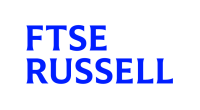Inflation, Inversion, and Markets
Bond Market Angst: From a Dove to a Hawk?
The yield curve inverted briefly recently, as investors began to consider that the Fed actually meant business about regaining control of inflation, intimating that rate hikes of 50 basis points in upcoming meetings were not off the table. Concerns began to emerge about a possible Fed policy error if it pursued inflation too hard and too fast. Lael Brainard, once perceived as one of the doves on the FOMC, showed investors that she wasn't averse to some of the monetary policy 'red meat' favoured by the hawks, by suggesting that the Fed's balance sheet will shrink faster than most thought, setting off alarm bells across bond markets and quickly un-inverting the curve. The size and speed of the move in yields (10-year yield up almost 100 basis points since just after the Russia-Ukraine invasion started) has taken many by surprise and it is proving to be a testing time to be a bond market investor.

Puzzles of Inflation, Money, and Debt (CFA Institute Research Foundation, 2021)
CFA Institute Research Foundation’s paper aims to outline and contextualise the fiscal theory of the price level (FTPL) as monetary theory to help explain the low inflation that followed the expansionary monetary policies which typified, until recently, the period post GFC.
Allocations For Inflation: A tale of three asset classes (LGIM, Mar 2022)
For compliance reasons, this paper is NOT accessible in the United States and Canada
LGIM describes how investors can hedge inflation using linkers, keep pace with inflation using equities, and gain the potential of an outsize return if inflation spikes by using commodities.
How Inflation Turned Out to be Anything but Transitory (DWS Group, Mar 2022)
As German consumer prices hit a 42-year high recently and are likely to continue rising, DWS illustrates how inflation has become far less transitory than most central bankers had hoped.
Listed Real Estate and Short-term Inflation Impacts (CAIA, 2022)
CAIA’s paper investigates the interaction of inflation on the real estate industry, noting that many variables interact and affect both the revenue and expenses line.
Low Interest Rates and the Predictive Content of the Yield Curve (FRBC, 2021)
This U.S. Federal Reserve of Cleveland paper investigates the yield curve’s predictive nature for output and recessions in a low yield environment.
The Best Strategies for Inflationary Times (PMR, 2021)
This paper explores how investors might protect portfolios against inflation, analysing those investment strategies and classes which post the highest real returns in periods when inflation exceeded 5%.
Resilient Multi-Asset Portfolios in an Inflationary Regime (Amundi, 2022)
For compliance reasons, this paper is NOT accessible in the United States
Amundi argues that for multi-asset portfolios, investors need to understand, and adjust for, differing levels of inflation across the globe, with high levels in the developed world and many emerging markets, but near absence in Japan and China.
Preparing for Rising Interest Rates in Credit (BlackRock, Mar 2022)
For compliance reasons, this paper is only accessible in certain geographies
As central banks reduce fiscal stimulus measures and inflation concerns abound, many investors are turning to floating-rate investments. Unlike other fixed income investments which are sensitive to changes in underlying risk-free rates, floating rate instruments provide an income based on credit-spread alone. This lack of interest rate sensitivity further provides protection against inflation in comparison to other asset classes and fixed income sectors.
Positioning in Differing Economic, Policy, and Inflation Regimes (Invesco, 2022)
For compliance reasons, this paper is only accessible in the United States
Invesco outlines a number of potential equity trades that investors could consider given their views on the economic cycle and inflation.
Inflation to Stagflation: Navigating multi-asset risks (Lombard Odier IM, 2022)
For compliance reasons, this paper is only accessible in certain geographies
Lombard Odier suggests how investors might align multi-asset portfolios to potentially contend with what they consider are increasing risks of stagflation.
Inflation Impact on Dividend Distributions (IHS Markit, 2022)
IHS Markit suggests that dividend paying stocks are one way to withstand inflationary periods. They investigate potential sectors and individual stocks to see how resilient their ability is, given current economic circumstances, to both pay and raise dividends.
Similarities and Differences in Inflation between 1970s and Now (VoxEU, 2022)
VoxEU looks at the how the recent commodity price surge and subsequent effect on inflation is both similar, but also different to what happened in the 1970s, contending that inflation may eventually fall back, but that many risks remain which central bankers need to consider.




